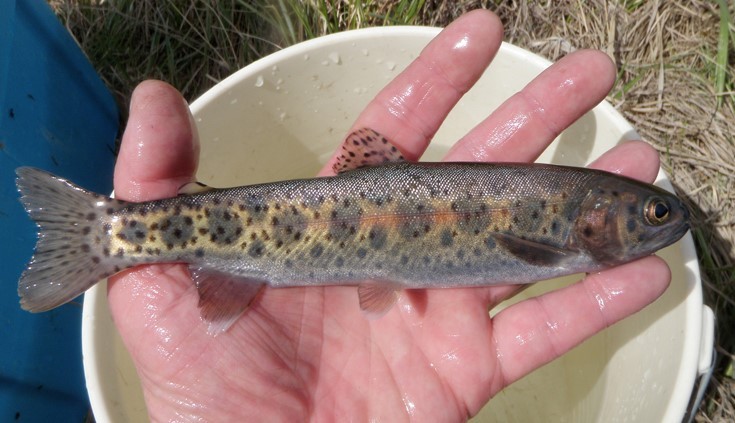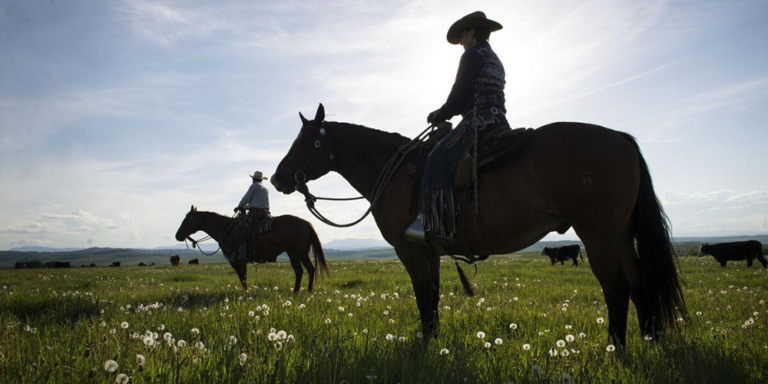Have you noticed a pattern?
We have, big non-Albertan resource companies going ahead with projects without getting needed permits to protect endangered fish.
First it was West Fraser’s building a controversial bridge over the Highwood River without permits.
Now, according to conservation groups, a controversial coal mine near Hinton started a major expansion in violation of federal regulations protecting endangered Athabasca rainbow trout and threatened bull trout habitat.
The Vista open-pit coal mine produces six million tonnes of thermal coal annually. It is owned by Coalspur which is owned by the parent company Vista Energy Holdings LLC, based in Mexico.
Thermal coal is burned in boilers to produce steam for the production of electricity or process heating purposes.
The mine started producing in 2019 and is huge at nearly 100 square kilometres, including undeveloped coal reserves.
The company wants to expand its open pit and increase production capacity by 4.5 million tonnes.
It also wants to build a small underground mine to test the possibility of adding a large underground coal mining operation.
The company exports the coal to foreign buyers.
Endangered Species At Risk
Ecojustice, on behalf of Keepers of the Water Society and the West Athabasca Watershed Bioregional Society, has written a letter to the Department of Fisheries and Oceans (DFO) asking it to take action against the coal expansion.
“DFO has previously confirmed that the underground mine is expected to adversely affect the legally defined critical habitat of endangered Athabasca rainbow trout, as well as the habitat of protected bull trout,” reads the letter.
Permits are required, the letter goes on to say.
DFO told the National Observer that it reminded Coalspur of its responsibilities under the Fisheries Act and the Species at Risk Act.
However, the federal agency hasn’t started an investigation.
This wait-and-see approach doesn’t sit well with people trying to protect precious fish habitat in Alberta.
“It’s time-sensitive,” said Ecojustice staff lawyer Daniel Cheater. “We’re being told that work is starting. It doesn’t mean that impacts have happened yet. But I think it’s critically important that [the DFO] act as quickly as possible to figure out what’s going on.”
This mine expansion could impact watersheds that are estimated to contain high populations of Athabasca rainbow trout.
Athabasca rainbow trout are distinct from the rainbow trout populations introduced to Alberta.
Athabasca rainbow trout are native to Alberta, spawn later in the spring, grow more slowly, and reach maturity at smaller sizes than their introduced counterparts.
These trout have specifically adapted to thrive in the small, cold, and nutrient-poor streams at higher elevations that feed the Athabasca River.

Dirty Thermal Coal
Coalspur is North America’s largest thermal coal mine.
Thermal coal is burned to generate heat and electricity, and it’s one of the dirtiest sources of planet-warming greenhouse gasses.
In 2021, the federal government said the chances of Coalspur getting approvals for expansion were very low.
At the time, Jonathan Wilkinson, then federal Minister of Environment and Climate Change, told the Financial Post, “We use the words ‘unacceptable environmental impacts’ to indicate how high the bar would be for any project to get through.”
Coalspur officials say the work they’re doing now ‘doesn’t expand’ the mine’s footprint, so permits aren’t required.
“The [test mine] simply represents an alternative mining method within the existing and approved permit boundary,” says its project description, as reported in a CBC story. “The [test mine] does not represent additional disturbance beyond the boundaries of the existing Phase I permit area.”
However, DFO officials disagree.
They say Coalspur’s actions could change nearby streams and groundwater flow and impact critical fish habitat.

Why No Stop-Work Order?
So why are federal officials not slapping Coalspur with an immediate stop-work order until the company applies for permits?
The feds will likely be wary after a recent Supreme Court decision declaring some parts of the Federal Impact Assessment Act (Bill C-69) unconstitutional.
Impact assessments on provincial resource extraction projects seem to be in limbo as the federal government navigates the ruling’s repercussions.
However, according to University of Calgary Faculty of Law Associate Professor Martin Olszynski, Ottawa still has “jurisdiction over fisheries, over the navigation of shipping, over migratory birds, over Indigenous Peoples and lands for Indigenous Peoples, over transboundary river pollution, over marine pollution by ocean dumping … and all of that is still a constitutional basis for impact assessment.”
So clearly, where threatened species are involved, the feds can still intervene with a stop-work order and an impact assessment.
Not doing so sends the message that protecting endangered species is less important than political appearances.
What’s worse, if regulators don’t step in, they’ll be propping up a sunset industry and giving an easy pass to a mine producing dirty thermal coal.
Thermal coal has been phased out across Alberta, and the province is on track to separate from coal-fired electricity by the end of this year.
In 2021, Coalspur was on life support.
After laying off 300 workers, it filed for creditor protection.
A $26 million (USD) loan allowed it to reopen and hire back 250 workers.
Maybe it’s time for the feds to get a spine, let this dinosaur die, and let our endangered fish species live.






